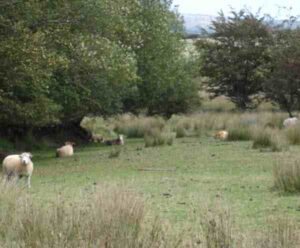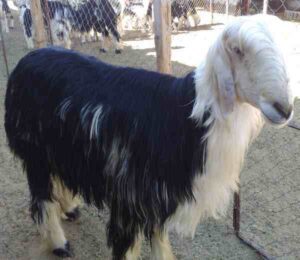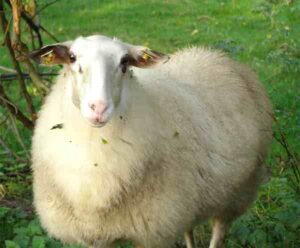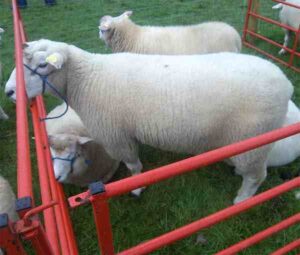The Bluefaced Leicester sheep is a breed of domestic sheep originated from the United Kingdom. It was developed from a breeding scheme of Robert Bakewell in Dishley, Leicestershire in the 19th century.
The breed was first known as the Dishley Leicester, and then Hexham Leicester. The name Bluefaced Leicester become known at the beginning of the twentieth century. It is also known as Bluefaced Maine and Blue-headed Maine.
The Bluefaced Leicester sheep were exported to Canada in the 1970s. Today the breed is raised for both meat and milk production. Their fleece is becoming increasingly popular for handspinning.
Today the breed is mainly found in Northern England, Wales and Scotland. Read some more information about this British sheep breed below.
Origin And History of Bluefaced Leicester Sheep
The Bluefaced Leicester sheep breed originated in the northern regions of England in the 18th century. The breed is a result of crossbreeding between Leicester Longwool and Teeswater sheep.
The Teeswater sheep were bred for their fine wool, while the Leicester Longwool were known for their large size and meat qualities. The combination of these two breeds resulted in the Bluefaced Leicester, which was originally bred for its wool.
Over time, the breed’s meat qualities became more prominent due to their ability to produce lean meat with good flavor. Today, Bluefaced Leicester sheep are raised primarily for their meat, but their wool is still highly regarded among hand spinners and weavers.
Characteristics
The Bluefaced Leicester sheep are large sized animals. They are mainly white in color with blue face. These animals are easily recognizable by their Roman noses, which have a dark blue skin which can be seen through the white hair. And the breed is named so mainly for their face.
Average body height of the Bluefaced Leicester rams is around 90 cm at the withers, and around 85 cm for the ewes. Average live body weight of the mature rams is around 110 kg. And the mature ewes on average weight around 89 kg. [1]
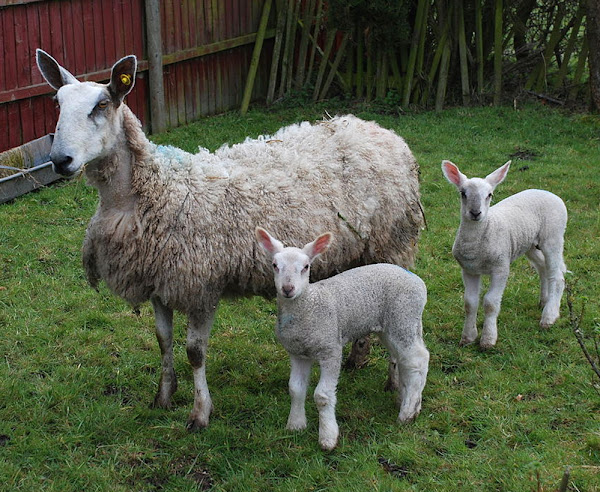
Uses
Bluefaced Leicester sheep are primarily raised for their meat, which is lean and flavorful. The meat is often sold as lamb, but can also be marketed as mutton if the animals are allowed to mature longer. The breed’s wool is also highly valued by hand spinners and weavers for its softness, luster, and curly texture.
In addition to their meat and wool, Bluefaced Leicester sheep are also used for conservation grazing. They are effective at managing vegetation in areas that may be difficult to access with machinery, such as hillsides and wetlands.
Special Notes
The Bluefaced Leicester sheep are hardy and strong animals. They are well adapted to their local climates. They have curly, fine, rather lustrous wool which is one of the softest of the UK clip. Their fleece is not very heavy, weighting only 1 to 3 kg.
Their head and neck are generally free of wool. Their pattern and shape of the wool is most like the Wensleydale sheep, but having smaller, tighter curls.
For producing mules, the Bluefaced Leicester rams are put over hill sheep ewes, which combine the prolificacy of the Bluefaced Leicester sheep with the hardiness and mothering ability of the hill sheep.
The ewes are highly prolific with an average lambing percentage ranges from 220 to 250 percent. However review full breed profile of this breed in the following chart.
| Breed Name | Bluefaced Leicester |
| Other Names | Dishley Leicester, Hexham Leicester, Bluefaced Maine, Blue-Headed Maine |
| Breed Purpose | Dual-purpose (meat and wool) |
| Special Notes | Large animals, very hardy and strong, well adapted to their native climates, have curly, fine, rather lustrous wool, fleece is not very heavy, ewes are highly prolific with an average lambing percentage ranges from 220 to 250 percent, good for both meat and wool production |
| Breed Size | Large |
| Weight | Mature ram’s average body weight is around 110 kg, and the mature ewe’s average live body weight is around 89 kg. |
| Horns | No |
| Climate Tolerance | Native climates |
| Color | White |
| Rarity | Common |
| Country/Place of Origin | United Kingdom |

